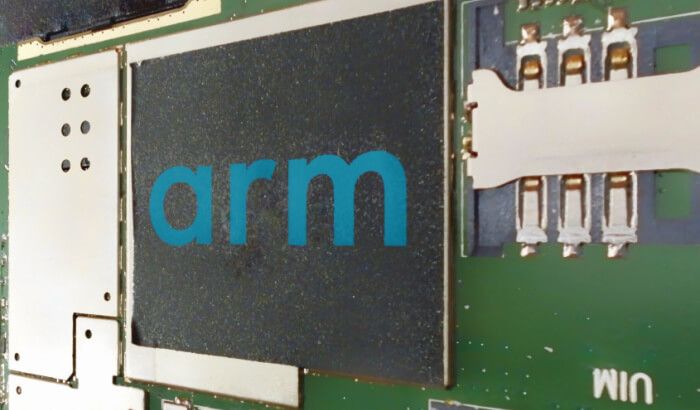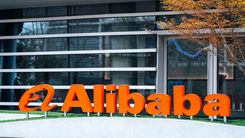
Friday Sep 15 2023 14:40

9 min

Stocks of SoftBank-owned chip designer Arm, trading under ticker symbol ARM, saw an increase in premarket trading on Friday, building on the remarkable 25% surge it achieved during its trading debut on Nasdaq (NDAQ) the previous day. The chip manufacturer's initial public offering (IPO), priced at $51 — the upper end of its proposed range — made a strong entrance into the market. Rounding off the biggest technology offering of 2023, the company boasted a market capitalization exceeding $65 billion at the end of the trading session.
Raising around $5 billion for SoftBank, Arm is the biggest U.S. offering since Rivian (RIVN) went public in 2021.
In an interview with CNBC, Jason Child, Arm’s Chief Financial Officer (CFO), discussed the company's strategic emphasis on increasing royalty income and delivering enhanced products to its customers that offer greater functionality while remaining cost-effective.
A significant portion of Arm's royalty earnings is derived from products introduced several decades ago. Approximately half of the company's royalty revenue, amounting to $1.68 billion in 2022, is attributed to products launched between 1990 and 2012.
“As a CFO, it’s one of the better business models I’ve seen. I joke sometimes that those older products are like the Beatles catalog, they just keep delivering royalties. Some of those products are three decades old,” Child said.
During its investor roadshow, Arm projected that the overall market for its chip designs is anticipated to reach approximately $250 billion by 2025, covering growth in chip designs for both data centers and automobiles.
Arm's designs serve as the foundation for nearly every smartphone chip, defining the fundamental operations of a central processor, such as arithmetic computations and access to computer memory. The company reported that over 30 billion Arm chips were shipped in the fiscal year ending in March 2023, with more than 250 billion chips shipped since the firm's inception.
In his call with CNBC, Jason Child mentioned that the company successfully sold $735 million worth of shares to a consortium of strategic investors — including Intel (INTC), Nvidia (NVDA), Apple (AAPL), Alphabet (GOOG), Samsung (SMSN), Advanced Micro Devices (AMD), Taiwan Semiconductor Manufacturing Company (TSM), Cadence and Synopsis. The high demand is a testament to Arm's substantial influence within the chip industry, as many companies rely on Arm's technology to craft and manufacture their own chips.
“There was interest to buy more than what was indicated, but we wanted to make sure we had a diverse set of shareholders,” Child added.
Сalculate your hypothetical P/L (aggregated cost and charges) if you had opened a trade today.
Market

Instrument


Account Type
Direction
Quantity
Amount must be equal or higher than
Amount should be less than
Amount should be a multiple of the minimum lots increment
USD
EUR
GBP
CAD
AUD
CHF
ZAR
MXN
JPY
Value
Commission
Spread
Leverage
Conversion Fee
Required Margin
Overnight Swaps
Past performance is not a reliable indicator of future results.
All positions on instruments denominated in a currency that is different from your account currency, will be subject to a conversion fee at the position exit as well.
Founded in 1990 through a joint venture between Apple, VLSI Technology, and Acorn Computer, a UK-based educational computing company, Arm is primarily involved in the design of circuits for chips —although it doesn't engage in chip manufacturing.
Based in the UK’s Cambridge, Arm provides two primary services. Firstly, it grants licenses for fundamental chip design standards that dictate how software controls chips. These protocols are essential for chips to process calculations as required by apps, ensuring proper software functionality. Secondly, Arm licenses designs for critical chip components — essentially miniature digital processors within the chips. This service saves chip designers the time and costs associated with developing these components from scratch.
In its early years, Arm focused on serving the emerging mobile phone industry, concentrating on providing circuit blueprints for devices that operated on batteries and required minimal power consumption. Over time, Arm has become ubiquitous in the smartphone market, boasting a market share estimated at over 99%. As it transitions into a publicly traded company, Arm is eyeing expansion into the realm of chips for personal computers, servers, and other devices.
“They’re a technology leader,” Nick Einhorn, director of research at Renaissance Capital, told Morningstar. “They’ve done very well in a lot of use cases, particularly smartphones.”
Arm’s market share is so dominant that they basically “are the market,” Einhorn adds. He believes Arm will “certainly” benefit as demand for CPUs continues to expand.
Arm's major clientele includes companies like Qualcomm (QCOM), known for designing processors at the core of mobile phones. Apple has also emerged as a significant customer in recent years as the Cupertino-based company shifted its focus to designing its own chips, including those for its computer lineup. Amazon (AMZN) also employs self-designed Arm-based chips in its data centers.
However, Arm faces competition, both from newcomers employing a rival open-source chip standard called RISC-V and from major tech firms that are increasingly incorporating their circuitry into chips, sometimes replacing Arm's designs. Investors in the company are placing their bets on the assumption that Arm's designs will remain widely used as chip demand continues to grow, and that its competitors won't be able to gain a competitive advantage.
In its most recent fiscal year ending in March, Arm reported revenue of $2.68 billion and a profit of $524 million.
While Arm has experienced consistent sales growth in recent years, it has encountered a decline in smartphone shipments in more recent times. Sales dipped by approximately 2.5% in its most recent quarter, which ended in June, to reach $675 million.
Arm stock price forecast: Arm IPO ‘relief’ for investors, price targets slowly rolling in
As noted by the Wall Street Journal, the market reaction to the biggest offering of the year will be met with a “sigh of relief” from investors, as well as companies waiting to go public and Wall Street firms that reap lavish fees from underwriting IPOs.
Following the success of the Arm IPO, grocery-delivery firm Instacart is reportedly preparing to raise the target price for its own initial public offering. The company intends to announce that it will sell its shares for a price between $28 and $30 apiece in a new filing with the Securities and Exchange Commission. The update may be made public as soon as Friday, people familiar with the matter told WSJ.
NewStreet Research analyst Pierre Ferragu wasted no time in issuing a forecast for Arm stock — on Wednesday, Ferragu picked up coverage of the firm’s shares with a Buy rating and a $59 target price, as per Barron’s.
“Arm’s fundamentals have not changed in the last seven years: The company rides growth in semiconductor content across all end markets, driving up adoption of its IP,” Ferragu wrote.
Ferragu cited a “high-quality financial model,” a well-timed IPO and an “attractive” valuation as three primary reasons for being bullish on the stock. “The IPO happens at a low in the smartphone market, as penetration accelerates in networking, cloud, and autos, and in the early days of the migration to the v9 architecture,” Ferragu wrote, referring to the company’s latest chip design.
Markets.com Chief Market Analyst Neil Wilson was more reserved, commenting that the offering came at an “interesting” time for the market:
“Arm is riding an AI wave and has lots of forced buyers as SoftBank plays the indices neatly and the broader market will be riding on this IPO to an extent. We’ve not really had a major tech IPO this year and it comes at an interesting time for the market.”
When considering shares for trading and price predictions, remember that trading CFDs involves a significant degree of risk and could result in capital loss.
Past performance is not indicative of any future results. This information is provided for informative purposes only and should not be construed to be investment advice.
Asset List
View Full ListTags Directory
View allLatest
View all
Thursday, 20 February 2025

8 min

Thursday, 20 February 2025

5 min

Thursday, 20 February 2025

2 min



